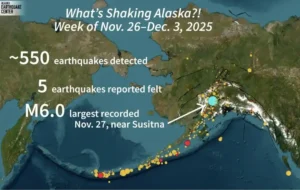Scientists recently discovered vast water reservoirs hidden deep beneath Earth’s mantle, marking a significant breakthrough. This discovery suggests that the water within Earth’s interior might exceed the volume of all surface oceans combined, potentially transforming our understanding of the planet’s water cycle and geological history.
The joint efforts of geophysicists and seismologists, primarily associated with Northwestern University and the University of New Mexico, enabled the identification of this hidden hydrosphere. To determine the origin of this water source in the “transition zone” of Earth’s mantle, located between 250 and 410 miles below the surface, the team led by Steve Jacobsen and Brandon Schmandt used seismic data and laboratory tests. This reservoir isn’t liquid; instead, the water is chemically bound within the crystal structure of the mineral Ringwoodite. With its high water content, this mineral stands as one of Earth’s most invaluable water sources.
The Role of Ringwoodite and Seismic Data in the Discovery
Ringwoodite is a high-pressure equivalent of olivine, found only in the Earth’s mantle, and can hold substantial quantities of water. Experimental studies conducted by Jacobsen have demonstrated that Ringwoodite has a water content of up to 1.5% by base weight. This finding was further supported by seismic investigations carried out by Schmandt, which detected signs of partial melting along the boundary of the transition zone. Thermal deformation is the release of water by minerals, such as Ringwoodite, when their temperature changes due to compressive solid pressures.
The hidden vast water reservoirs beneath significantly impact our understanding of the Earth’s interplanetary processes. The finding above suggests that the water cycle extends beyond the boundaries of the Earth’s surface and atmosphere, permeating the extensive mantle of the planet. Moreover, this finding prompts questions regarding water’s role in the Earth’s mantle dynamics, encompassing its influence on its magnetic field, plate geological processes, and volcanic outbursts.
Moreover, discovering these hidden oceans presents new opportunities for studying the origins of Earth’s water and the processes that control its distribution. Furthermore, the existence of hidden water in a planet’s subsurface can have consequences for the quest for alien life, as it could indicate that comparable occurrences have taken place on other celestial planets, enhancing the probability of their existence.
Implications and Future Research Directions
The identification of hidden oceans beneath the Earth’s mantle is a revolutionary development in the discipline of geology. This study’s findings challenge the reliability of earlier models of the Earth’s water distribution, suggesting that the planet’s interior may significantly impact the global water cycle more than previously assumed. Integrating this novel information can prompt a reassessment of geological processes, such as the behavior of mantle plumes and the formation of continental plates.
Researchers plan to evaluate the magnitude of these water reserves and their impact on the global system’s geodynamics. To fully understand the magnitude of this hidden water and its influence on the Earth’s development, it is crucial to use sophisticated seismic imaging methods and carry out supplementary laboratory studies. Moreover, this finding can influence the study of other terrestrial bodies, as it might indicate the existence of water situated many layers below their mantles, where similar events may occur.
The underground water depths under the United States challenge our understanding of the Earth’s hydrological cycle and geological history. This revelation has significantly transformed our comprehension of the planet’s innards and offers fascinating prospects for future investigation into the Earth’s most profound aspects and beyond.












